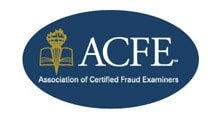| Case type: | Antitrust |
| Attorney: | Maxwell M. Blecher |
| Law Firm: | Blecher & Collins |
| Venue: | United States District Court, Northern District of California |
| Side: | Plaintiff |
| Trier of fact: | Jury |
| Testimony Issue: | Lost profits |
| Testimony Dates: | July 27, 1995, July 28, 1995 and August 10, 1995 |
| Case Summary: | Eleven independent service organizations contended that Eastman Kodak Company violated Section 2 of the Sherman Act by refusing to sell them parts to service Kodak photocopiers and micrographics equipment. Plaintiffs claimed this policy allowed Kodak to monopolize the servicing of its equipment with the added effect of restricting sales of used equipment. |
| Testimony summary: | Most of the eleven plaintiffs had multiple damage claims covering lost profits from two or more of the following categories: servicing Kodak photocopier equipment, servicing Kodak micrographics equipment, refurbishing and selling used Kodak photocopier equipment, and refurbishing and selling used Kodak micrographics equipment. In addition, plaintiffs’ claims included both historical and future lost profits. The challenge of preparing eleven individual damages analyses and presenting the findings to a jury was formidable. For each plaintiff Mr. Neches began by gathering sales and expense data. He analyzed each plaintiff’s sales trends for servicing and refurbishing Kodak photocopiers and micrographics equipment. In each case he discovered a similar pattern: sales had increased prior to Kodak’s institution of its policy not to sell parts to independent service organizations, then sales decreased subsequent to the policy implementation. Mr. Neches demonstrated this pattern to the jury through a series of simple charts. To project what each plaintiff’s sales would have been but for Kodak’s wrongful actions, Mr. Neches used the sales trends plaintiffs achieved in competitive environments. Each plaintiff’s actual sales were subtracted from its projected but-for sales to determine lost sales. The fixed and variable expenses of each plaintiff were analyzed to determine the marginal profit on the lost sales. Combining these analyses, Mr. Neches calculated historical lost profits and future lost profits to determine total damages. Each damage claim was presented separately to the jury. Mr. Neches assisted plaintiffs’ attorneys, led by Maxwell Blecher, in preparing each plaintiff for his trial testimony. Following five days of deposition, Mr. Neches testified at trial regarding damages during both the direct and rebuttal phases of plaintiffs’ case. In their unsuccessful motion to overturn the jury’s verdict, Kodak and its attorneys paid Mr. Neches a fine, albeit backhanded, compliment. In Kodak’s Memorandum of Points and Authorities in Support of Defendant Eastman Kodak Company’s Motions for Judgment as a Matter of Law or, in the Alternative, for New Trial — Damages Issues, they wrote: “Almost all of the many errors in the jury’s damage award can all [sic] be traced to a single root cause — the testimony and damage study of plaintiffs’ expert.” After extensive post-trial briefing, the Court approved the damages methodology, affirmed the jury’s verdict and ordered that the damages awarded by the jury be trebled. |
| Result: | The jury awarded ten plaintiffs $23,948,300, which was trebled under antitrust law to $71,844,900. The United States Court of Appeals, Ninth Circuit, affirmed as to all liability issues, affirmed services damages awarded to nine of the ten ISO’s and remanded for new trial used equipment damages. The United States Supreme Court denied review of the Ninth Circuit decision. The remaining issues were appealed and subsequently settled. |










IF YOU HAVE ANY QUESTIONS, PLEASE CALL THOMAS NECHES DIRECTLY AT 213.448.7750.
CONTACT US